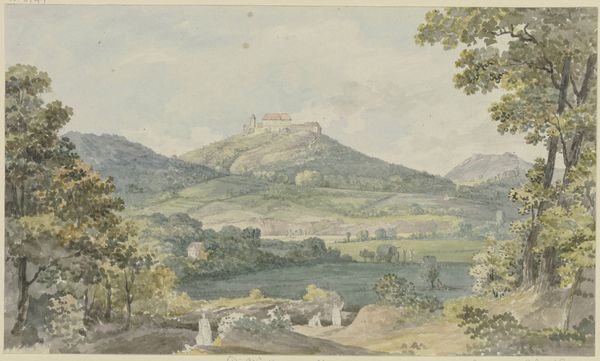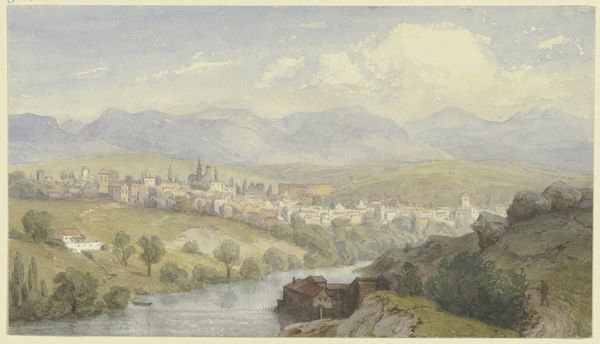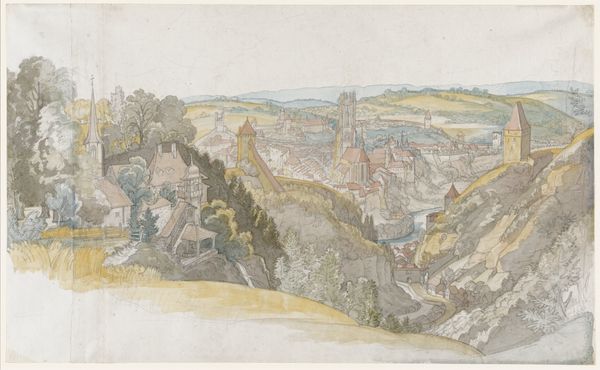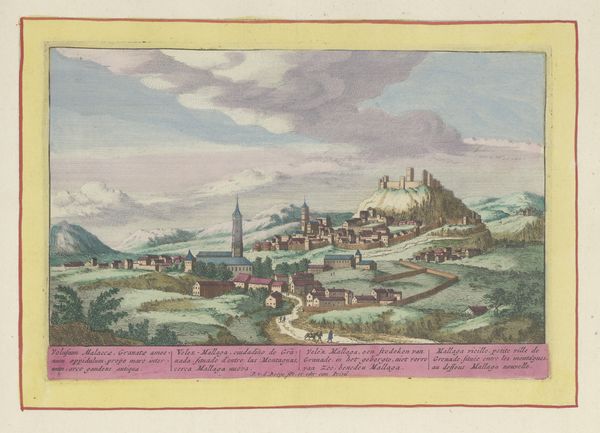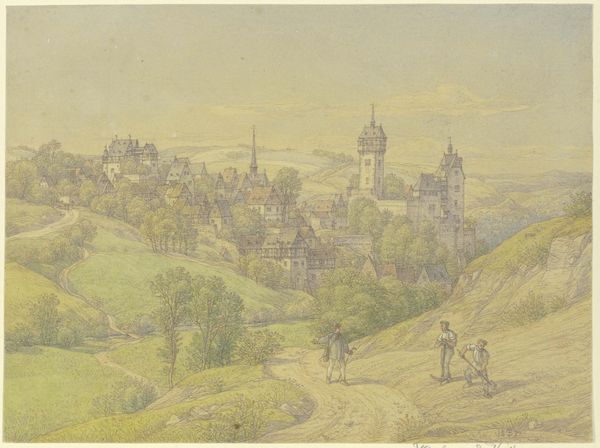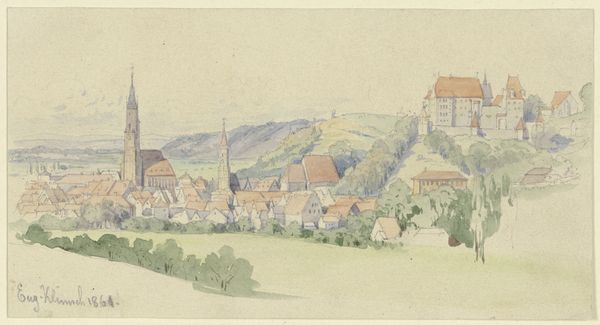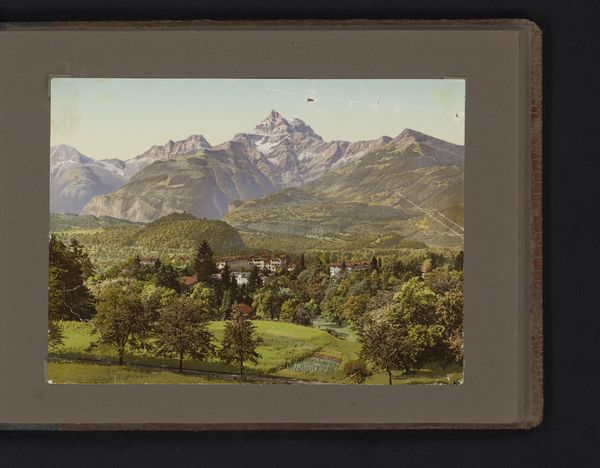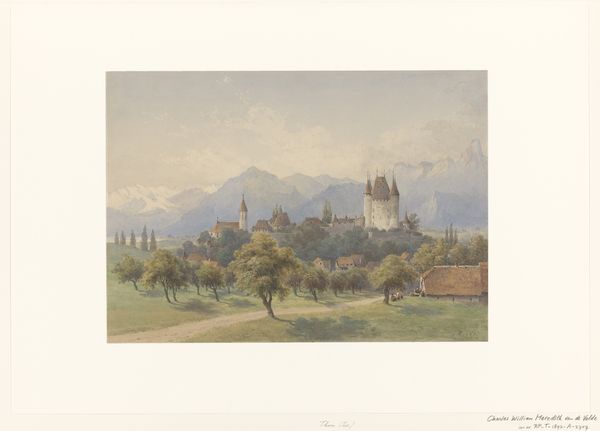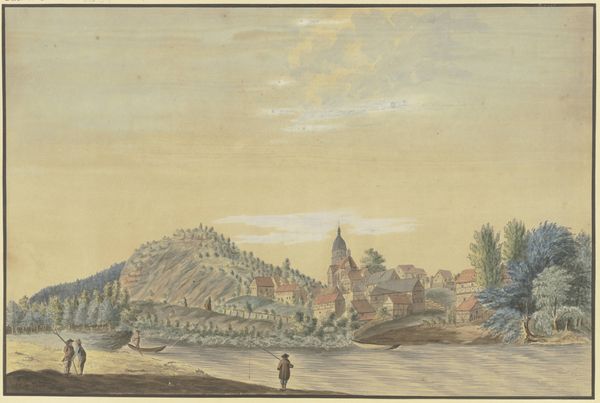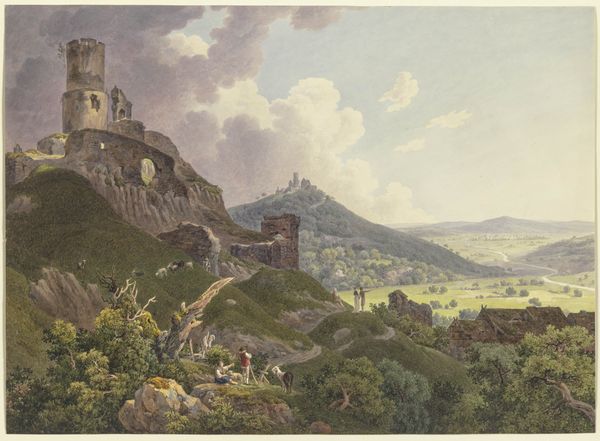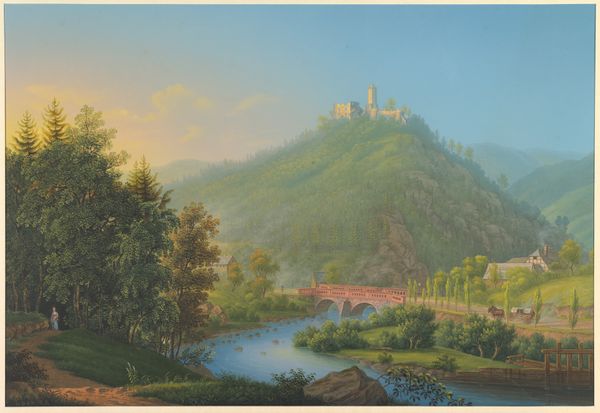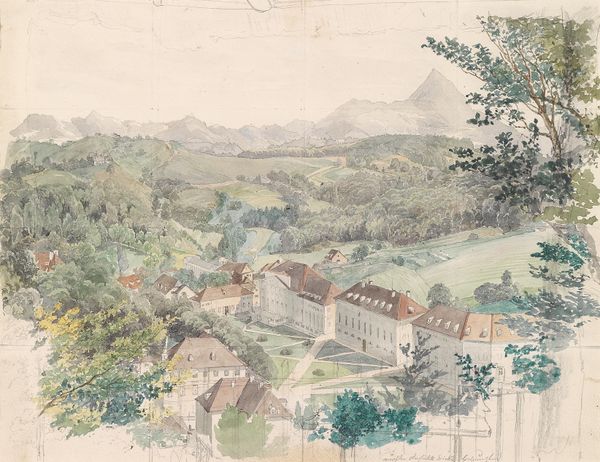
Dimensions: height 74 mm, width 109 mm
Copyright: Rijks Museum: Open Domain
Curator: What strikes me immediately about this cityscape is its dreamlike quality. The colours are muted, the details softened. Editor: It's peaceful, isn’t it? A gentle, almost melancholic atmosphere seems to emanate from this tinted drawing. Curator: The artwork, known as "Gezicht op Eisenach," created sometime between 1846 and 1913, captures just that quality. It employs coloured pencils, lending a softened texture to the architectural details of the cityscape, particularly as the rolling hills create an atmospheric backdrop. Editor: Yes, and given the time frame, I’m immediately interested in the material conditions of its production and reception. Who was making these coloured pencils? How readily available would they have been? That range is significant! Was this displayed for local consumption or created as an advertisement for a railway in the area? Curator: Those questions of manufacture and circulation are important, especially considering the style's ties to Romanticism. Note how the hilltop castle overlooking the city serves almost as a symbolic reminder of both a noble, perhaps idealized, past and the potential of spiritual solace through architectural splendor. It draws the viewer in, towards contemplation, through symbolic anchors in the landscape. Editor: Indeed! Considering how Romanticism often responded to the increasing industrialization by aestheticizing the pre-industrial landscape and labor… What stories about Eisenach did its inhabitants carry? Or those from further away, visiting as travelers? This depiction is an attractive image, designed to create consumerist desires linked to place and history. It has its feet firmly rooted in consumption. Curator: Well, no matter what drove the original intent, seeing it now offers an intimate and wistful glance back. Its symbolic layers are open for exploration now as they might have been then, connecting past to present through our cultural imaginings of landscape, travel, and belonging. Editor: Yes, now it feels quite layered—its material history, tied with both idyllic and symbolic qualities for viewers across eras and through consumption itself.
Comments
No comments
Be the first to comment and join the conversation on the ultimate creative platform.
